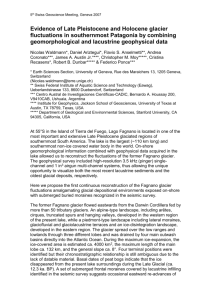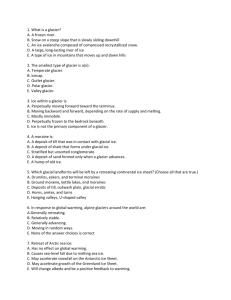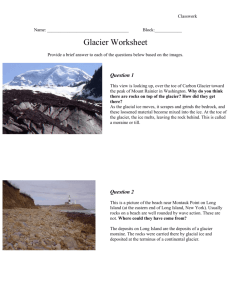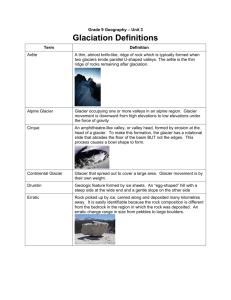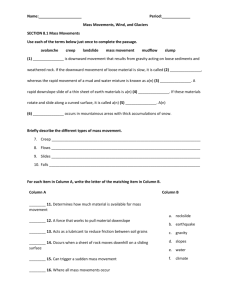Glacial Processes
advertisement
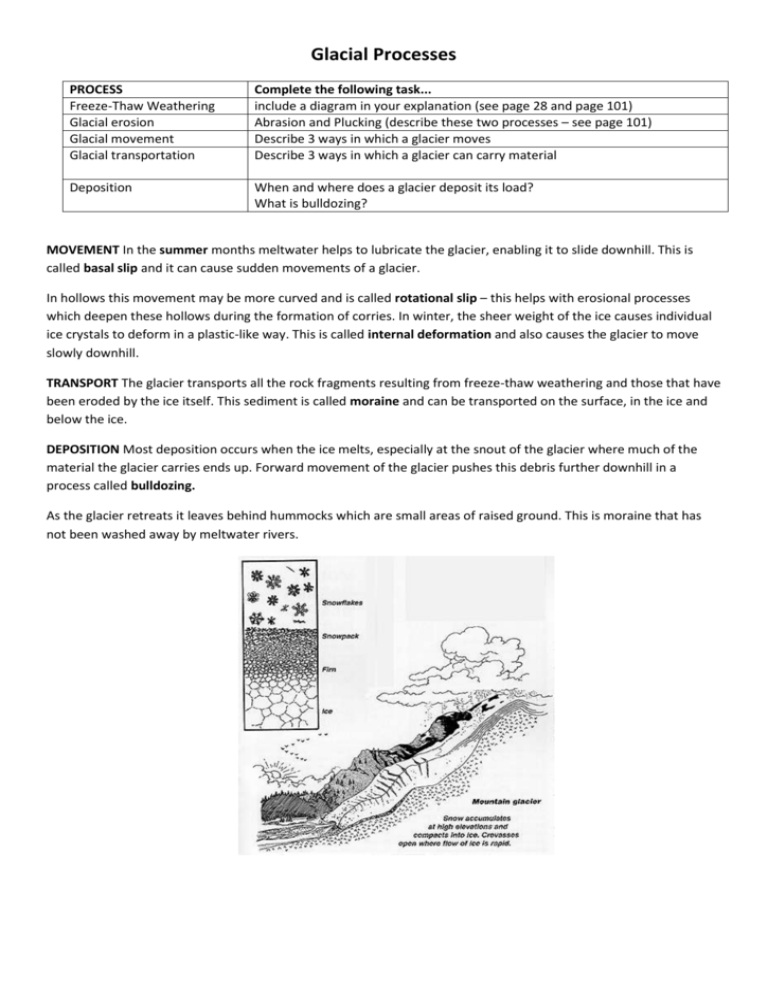
Glacial Processes PROCESS Freeze-Thaw Weathering Glacial erosion Glacial movement Glacial transportation Complete the following task... include a diagram in your explanation (see page 28 and page 101) Abrasion and Plucking (describe these two processes – see page 101) Describe 3 ways in which a glacier moves Describe 3 ways in which a glacier can carry material Deposition When and where does a glacier deposit its load? What is bulldozing? MOVEMENT In the summer months meltwater helps to lubricate the glacier, enabling it to slide downhill. This is called basal slip and it can cause sudden movements of a glacier. In hollows this movement may be more curved and is called rotational slip – this helps with erosional processes which deepen these hollows during the formation of corries. In winter, the sheer weight of the ice causes individual ice crystals to deform in a plastic-like way. This is called internal deformation and also causes the glacier to move slowly downhill. TRANSPORT The glacier transports all the rock fragments resulting from freeze-thaw weathering and those that have been eroded by the ice itself. This sediment is called moraine and can be transported on the surface, in the ice and below the ice. DEPOSITION Most deposition occurs when the ice melts, especially at the snout of the glacier where much of the material the glacier carries ends up. Forward movement of the glacier pushes this debris further downhill in a process called bulldozing. As the glacier retreats it leaves behind hummocks which are small areas of raised ground. This is moraine that has not been washed away by meltwater rivers.




